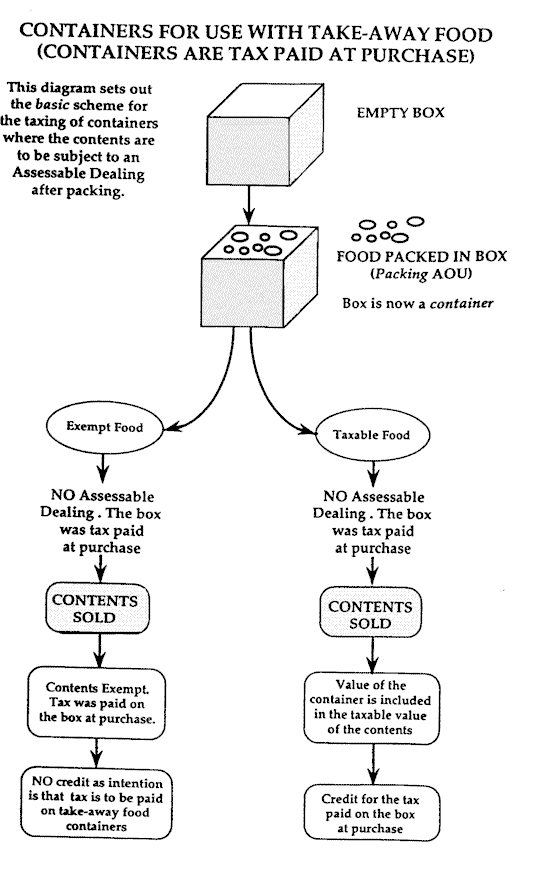Further Supplementary Explanatory Memorandum
General outline and financial impact



2. Financial Impact: The amendments will prevent a significant, but unquantifiable, loss to the revenue.
Background
3. The general principle of the sales tax is that a container and its contents should be taxed at the same time and at the same rate. This is achieved by providing a wide exemption from tax for containers in their own right, but including their value in the taxable value of any subsequent dealing with their contents.
4. There is, however, an exclusion from this rule in the case of containers which are purchased tax paid. In this case, the value of the container is excluded from the taxable value of the contents, so as to avoid the double taxation of the container. This approach to the avoidance of double taxation is not producing the desired result:
- •
- first, in the case of a container that is taxable in its own right at a rate that is less than the rate applicable to its contents, if the container is purchased tax paid there is no mechanism in the law to recover the difference.
- •
- second, the value of the container is being inflated to include a range of costs (and profit margin) added after the point at which tax was paid on the container. This has the effect of excluding from the taxable value of the contents an untaxed proportion of the value of the contents.
5. In both the cases outlined in paragraph 4, the exclusion of the value of the tax paid container from the taxable value of the contents is not producing a result that is consistent with container and contents being taxed at the same rate and time.
Explanation of the amendments
6. In order to ensure that contents and container receive the same tax treatment, it is proposed:
- a)
- to include the value of all containers in the taxable value of their contents;
- b)
- to provide a credit entitlement, at the time of the taxable dealing with the contents, for the amount of any tax previously paid on the container, when it was the subject of an assessable dealing in its own right.
7. Container component: The exclusion of the value of a container that has already borne tax, from the taxable value of its contents is made by paragraph 35(4)(a) of the Sales Tax Assessment Act 1992. In order to include the value of all containers in the taxable value of their contents, paragraph 35(4)(a) will be repealed [Clause 66] .
8. New Credit Grounds: It is proposed to provide a credit for any tax borne on a container in its own right that subsequently:
- a)
- has its value included in the taxable value of its contents; and
- b)
- is a container for contents which are the subject of an assessable dealing that is not taxable for any reason (other than because the dealing is covered by the small business exemption available under the sales tax law).
9. Sometimes, a container and its contents will be regarded as separate goods at the time of the assessable dealing with the contents. In these cases. a new credit ground will be introduced. [Clause 67, paragraph (b) - new CR8A ]
10. In other cases, a container and its contents will be regarded as the same goods at the time of the assessable dealing with the contents. In these cases, existing credit ground CR6 will provide the credit if the assessable dealing with the contents is taxable. Similarly, CR7 will provide the credit if the assessable dealing with the contents is exempt. However, in the case of CR7 an amendment will be necessary to exclude the credit entitlement in cases where the container is for goods covered by sub-item 27(3) in Schedule 1 to the Sales Tax (Exemptions and Classifications) Act 1992. [Clause 67 ] .
Commencement and application
11. The amendments will apply to all assessable dealings with goods taking place after 26 May 1993. [Clause 68] .
Copyright notice
© Australian Taxation Office for the Commonwealth of Australia
You are free to copy, adapt, modify, transmit and distribute material on this website as you wish (but not in any way that suggests the ATO or the Commonwealth endorses you or any of your services or products).
